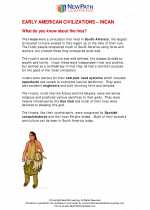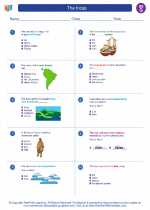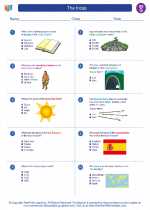Ecosystems
An ecosystem is a community of living organisms (plants, animals, and microorganisms) in conjunction with the nonliving components of their environment (such as air, water, and mineral soil), interacting as a system. These biotic and abiotic components are linked together through nutrient cycles and energy flows. Ecosystems can vary greatly in size and can be as small as a puddle or as large as a forest.
Components of an Ecosystem
There are two main components of an ecosystem:
- Biotic Components: These are the living organisms within the ecosystem, including plants, animals, and microorganisms.
- Abiotic Components: These are the non-living factors such as soil, water, air, sunlight, temperature, and climate that influence the ecosystem and the organisms within it.
Types of Ecosystems
Ecosystems can be classified into different types based on their characteristics:
- Terrestrial Ecosystems: These include forests, grasslands, deserts, and tundras.
- Aquatic Ecosystems: These include freshwater ecosystems (such as rivers and lakes) and marine ecosystems (such as oceans and coral reefs).
Energy Flow in Ecosystems
Energy flows through an ecosystem in a one-way direction. Producers, such as plants, capture sunlight and convert it into energy through photosynthesis. This energy is then transferred to consumers (herbivores and carnivores) as they feed on the producers or other consumers. Decomposers break down dead organisms and recycle nutrients back into the ecosystem.
Ecological Relationships
Within an ecosystem, different species have various ecological relationships, including:
- Predation: A predator-prey relationship where one organism (the predator) hunts and consumes another organism (the prey).
- Competition: When two or more species compete for the same resources, such as food, water, or territory.
- Mutualism: A symbiotic relationship where both species benefit from the interaction.
- Parasitism: A relationship in which one organism (the parasite) benefits at the expense of another organism (the host).
Human Impact on Ecosystems
Human activities, such as deforestation, pollution, overfishing, and urbanization, can have a significant impact on ecosystems, leading to habitat destruction, loss of biodiversity, and disruption of ecological balance.
Study Guide
Here are some key points to focus on when studying ecosystems:
- Identify the biotic and abiotic components of an ecosystem.
- Understand the flow of energy through an ecosystem, from producers to consumers and decomposers.
- Explore the different types of ecosystems and their characteristics.
- Learn about ecological relationships and the interactions between species within an ecosystem.
- Examine the impact of human activities on ecosystems and the importance of conservation.
Remember to review specific examples of ecosystems, such as a tropical rainforest, a coral reef, or a grassland, to understand the unique characteristics and biodiversity of each ecosystem.
Good luck with your studies!
[Ecosystems] Related Worksheets and Study Guides:
.◂Social Studies Worksheets and Study Guides Seventh Grade. The Incas

 Worksheet/Answer key
Worksheet/Answer key
 Worksheet/Answer key
Worksheet/Answer key
 Worksheet/Answer key
Worksheet/Answer key
